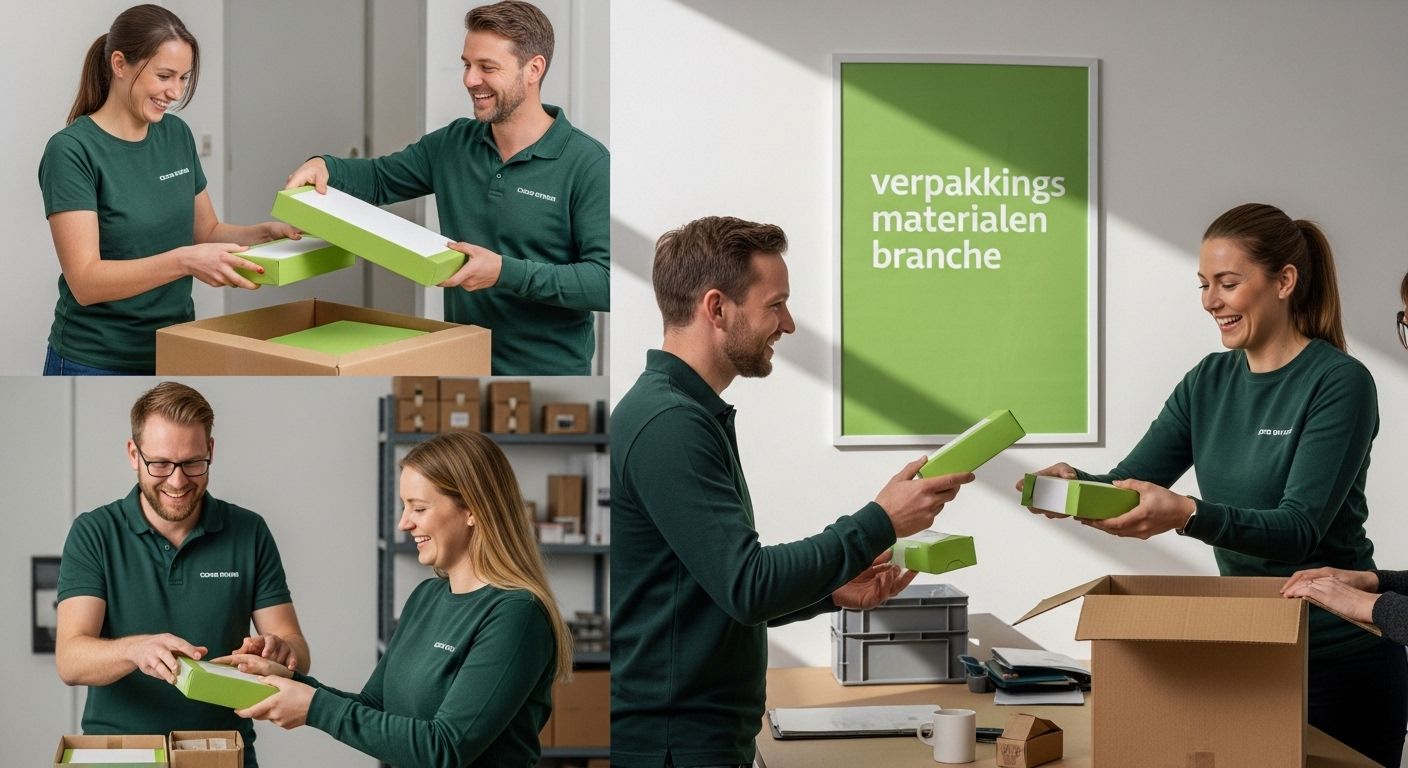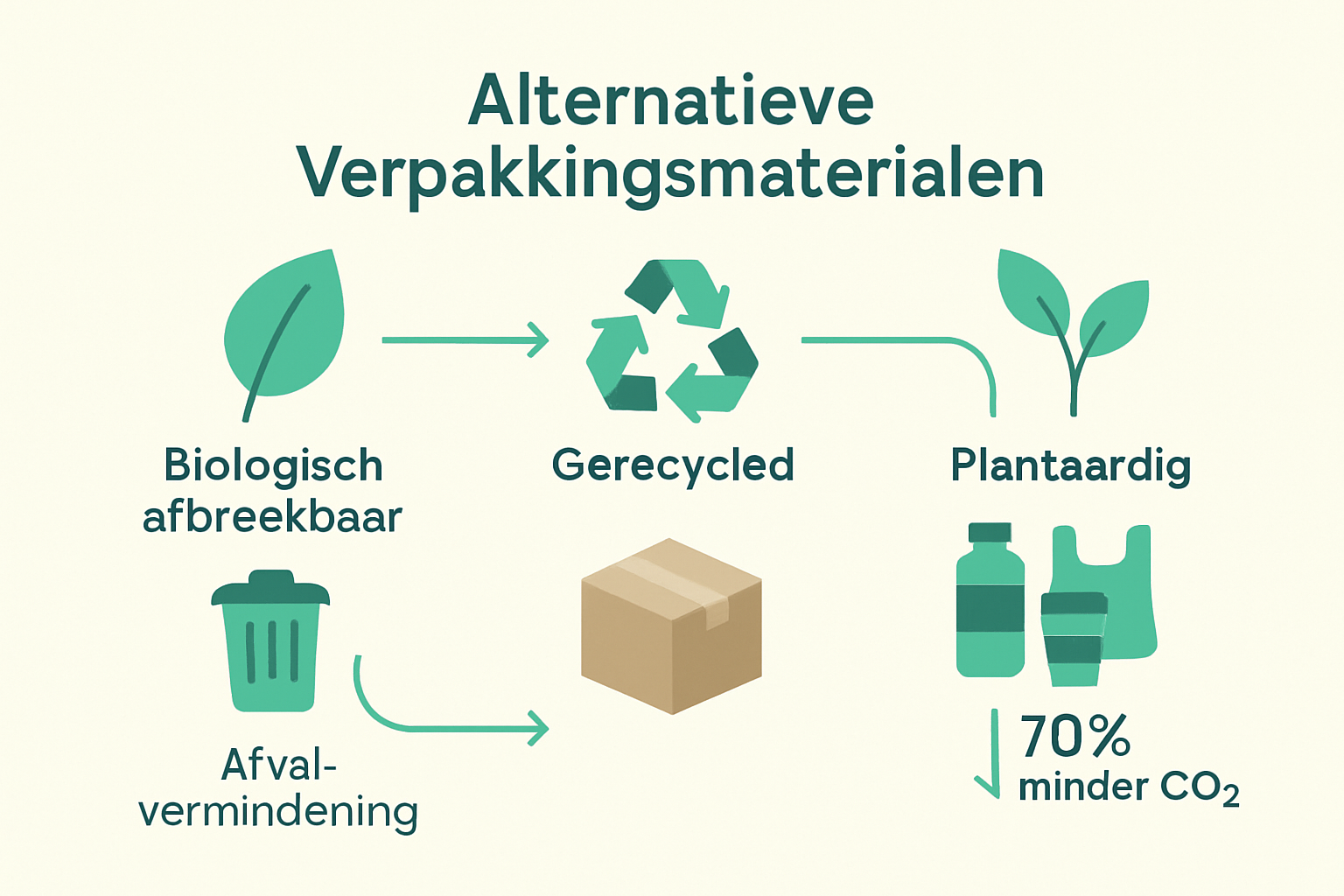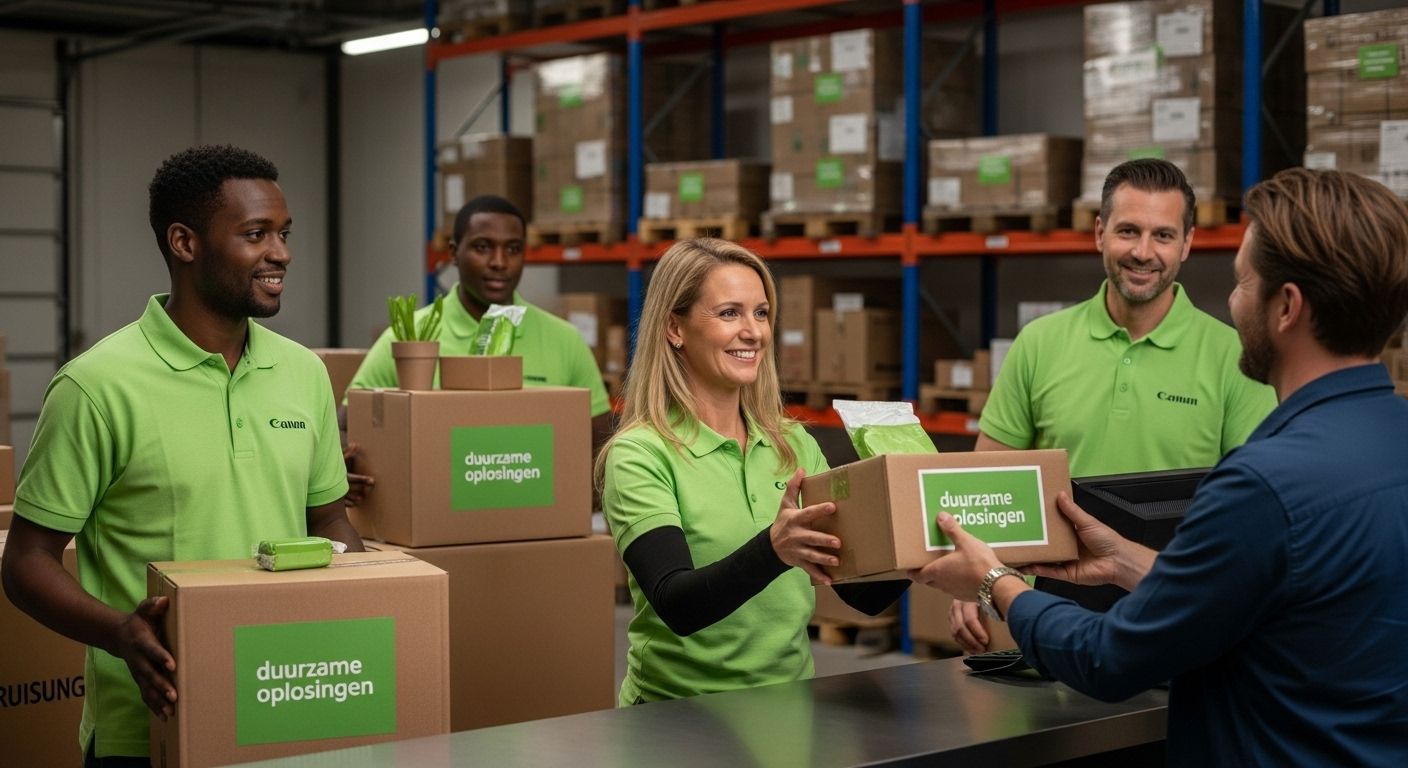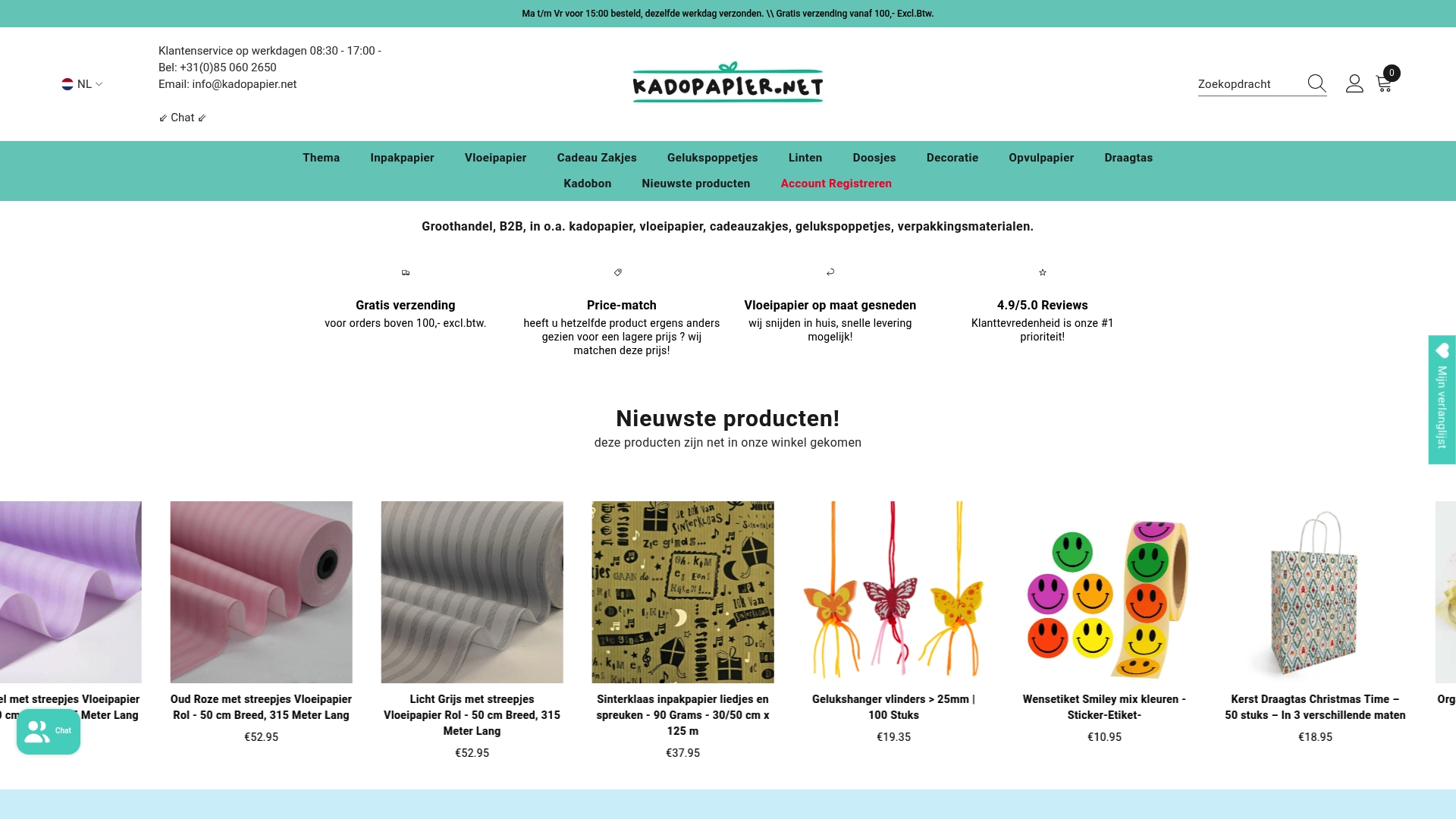Alternative packaging materials for every industry

More and more companies are looking for ways to make their packaging more environmentally friendly. Did you know that recycled packaging produces up to 70 percent less CO2 emissions than traditional alternatives ? Many people think sustainable packaging is automatically more expensive or less durable, but the opposite is true. The latest alternative materials offer unexpectedly smart solutions for every type of business and contribute to a cleaner world.
Table of contents
- What are alternative packaging materials?
- Benefits for various sectors and applications
- Popular sustainable alternatives and their properties
- Tips for choosing the right packaging material
Short Summary
| Takeaway | Explanation |
|---|---|
| Choose sustainable packaging materials | Alternative packaging materials reduce the ecological footprint and meet sustainability requirements. |
| Biodegradable is the future | Materials such as cornstarch and bamboo are completely biodegradable, which helps reduce waste. |
| Stimulating the circular economy | Recycled packaging reduces CO2 emissions and increases raw material availability. |
| Strengthen your brand image | By making sustainable packaging choices, you increase customer loyalty and improve brand perception. |
| Align with product requirements | Choose packaging materials based on the specific protection needs of your products. |
What are alternative packaging materials?
Alternative packaging materials offer an innovative solution for companies seeking more sustainable and environmentally friendly packaging options. These materials are designed to replace traditional packaging, aiming to reduce the environmental footprint while simultaneously meeting practical packaging needs.
Definition and Key Characteristics
Alternative packaging materials are materials that deviate from conventional packaging solutions such as standard plastic and non-sustainable cardboard. They are distinguished by properties such as renewability, biodegradability, and minimal environmental impact. Research by the Dutch Environmental Federation shows that these materials can contribute to a significant reduction in waste and resource shortages.
Below you'll find an overview of the main types of alternative packaging materials, their sources, and their distinguishing characteristics. This helps you quickly compare different sustainable options.
| Type of material | Source/raw material | Main feature |
|---|---|---|
| Biodegradable | Corn starch, sugar cane, bamboo | Completely biodegradable, no harmful residues |
| Recycled packaging | Recycled raw materials | Significantly reduces CO2 emissions |
| Plant-based packaging | Algae, mushrooms, cocoa shells | Fully compostable, innovative raw materials |

These alternative materials come from diverse sources, such as plant residues, recycled materials, and organic components. They are not only environmentally friendly but often also versatile in various industries, including food, retail, logistics, and mail order.
Main Types of Alternative Packaging Materials
There are several categories of alternative packaging materials, each with unique properties:
-
Biodegradable materials : Made from natural components such as corn starch, sugar cane or bamboo, which can decompose completely without harmful residues.
-
Recycled packaging : Materials made from previously used raw materials, thus promoting the circular economy. A CE Delft report confirms that recycled packaging can generate up to 70% less CO2 emissions compared to traditional packaging.
-
Plant-based packaging : Innovative solutions such as packaging made from algae, mushrooms or cocoa shells that are fully compostable.
These alternative packaging materials not only offer environmental benefits but also support the growing demand for sustainable business solutions. They help companies fulfill their environmental responsibilities without compromising quality or functionality.
Companies that switch to alternative packaging materials not only invest in environmental protection but also create a positive image among conscious consumers who increasingly value sustainable choices. Whether you work in food, fashion, retail, or logistics, there's always a suitable alternative packaging solution available to meet your specific needs.
Benefits for various sectors and applications
Alternative packaging materials offer a wide range of benefits specific to different industries and applications. Each business sector can achieve unique advantages by strategically utilizing innovative and sustainable packaging solutions.
Packaging Benefits in the Food Industry
In the food industry, alternative packaging materials play a crucial role in food safety and sustainability. Research from the National Academies of Sciences, Engineering, and Medicine shows that biodegradable packaging can significantly reduce food waste and environmental impact.
Innovative materials such as plant-based packaging made from algae or starch, in particular, offer unique properties. They can regulate moisture, protect against bacteria, and even actively contribute to extending the shelf life of products. Moreover, these materials are often transparent and can be printed with nutritional information, improving consumer communication.
Sustainable Solutions for Retail and Shipping
The retail and shipping sectors are experiencing significant benefits from alternative packaging materials. Lightweight and compostable materials not only reduce transportation costs but also lower CO2 emissions. CE Delft reports that recycled packaging materials can generate up to 70% fewer greenhouse gas emissions compared to traditional packaging.
Companies can also strengthen their brand image by making visibly sustainable packaging choices. Consumers value companies that are consciously addressing environmental issues, which can lead to increased customer loyalty and positive brand perception.

Innovative Applications in Healthcare and Industry
In healthcare and industrial sectors, alternative packaging materials offer unique solutions to complex challenges. Antimicrobial packaging developed from natural materials can contribute to improved hygiene standards and product safety.
Industrial applications include packaging designed for specific environmental conditions. For example, some materials are resistant to extreme temperatures, chemical exposure, or contain special protective layers for fragile products.
The variety of alternative packaging materials allows us to create customized solutions that perfectly match the specific needs of different sectors. Whether it's food safety, sustainable transport, or special industrial requirements, there's always an innovative packaging solution available.
The table below summarizes the benefits of alternative packaging materials by sector. This quickly illustrates the added value these materials can deliver in each industry.
| Sector | Specific advantage | Example from the text |
|---|---|---|
| Food industry | Extends shelf life and reduces waste | Plant-based packaging with moisture-regulating properties |
| Retail & Shipping | Lower transportation costs, strengthened brand | Lightweight, compostable materials, visibly sustainable |
| Health care | Better hygiene, safety | Antimicrobial packaging made from natural materials |
| Industry | Resistance to extreme conditions | Materials for high/low temperature or chemical protection |
Companies that invest in alternative packaging materials not only position themselves as environmentally conscious organizations, but also create tangible benefits in terms of cost, efficiency and brand perception.
Popular sustainable alternatives and their properties
The world of alternative packaging materials offers a range of innovative solutions that are transforming the traditional packaging industry. These sustainable alternatives are distinguished by their unique properties, environmentally friendly composition, and versatile application possibilities.
Natural Polymers and Biomass Materials
Research from Oklahoma State University reveals the promising properties of natural polymers derived from biomass. Polysaccharides and protein-based materials offer excellent gas barrier properties, making them particularly suitable for food packaging.
These materials, derived from sources such as corn starch, sugarcane, and vegetable proteins, can be formed into flexible and strong packaging solutions. While they face challenges in terms of mechanical strength and water vapor permeability, these properties are continuously being improved through advanced scientific research.
Innovative Paper and Cellulose Packaging
Researchers at the University of Maine are developing advanced paper packaging materials with improved barrier properties. Using specialized coatings, paper packaging can be transformed into competitive alternatives to traditional plastic packaging.
Paper packaging offers several advantages. It's renewable, biodegradable, and easily recyclable. Modern technologies make it possible to make these materials water-resistant, grease-repellent, and even suitable for food contact.
Advanced Biodegradable Materials
Virginia Tech has made technological breakthroughs in the development of plant-based packaging materials. Using a low-pressure technique, these materials can be reinforced, increasing their mechanical stability and durability.
These advanced biodegradable materials include innovations such as:
- Algae-based packaging : Fully compostable and made from seaweed
- Mushroom materials : Formed from mycelium, providing strength and natural protection
- Cocoa shell packaging : Reusing agricultural waste for packaging purposes
At Kadopapier.net you'll find more creative sustainable packaging ideas that demonstrate how innovative and versatile these materials can be.
These alternative packaging materials represent not only technological advancements but also a fundamental shift toward more sustainable and environmentally conscious business practices. By choosing these innovative solutions, companies contribute to a circular economy and reduce their environmental footprint.
Tips for choosing the right packaging material
Selecting the right packaging material is a critical process that directly impacts product quality, environmental impact, and business performance. A well-considered choice can not only save costs but also contribute to sustainability goals and customer satisfaction.
Product Requirements and Level of Protection
Research published in PMC emphasizes the importance of tailoring packaging materials to specific product requirements. Each product has unique protection needs that require careful consideration.
When choosing packaging materials you should consider:
- Vulnerability of the product
- Temperature sensitivity
- Humidity level
- Transport conditions
- Desired shelf life
For sensitive products such as electronics or food, barrier materials are essential to protect against moisture, oxygen and external contaminants.
Environment and Recyclability
The PMMI ProSource Directory strongly recommends considering recyclability as a key criterion when selecting materials. The Center for Science in the Public Interest specifically warns against materials like polystyrene due to their negative environmental impact.
Sustainability criteria for packaging materials include:
- Possibility of recycling
- Renewability of raw materials
- Minimal CO2 emissions during production
- Biodegradability
For example, glass is considered superior because it can be infinitely recycled without loss of quality, while some plastics have limited reusability.
Practical and Economic Considerations
Besides technical specifications, practical and economic factors also play an important role in material selection. Consider these factors:
- Cost per packaging unit
- Availability of materials
- Processing and transportation costs
- Compatibility with existing packaging equipment
Want to learn more about creative packaging solutions? Discover our guide to perfect packaging with practical tips and insights.
The ultimate challenge is finding the balance between protection, sustainability, functionality, and cost. A strategic approach that considers all aspects leads to the most optimal packaging solution for your specific needs.
Remember: Choosing the right packaging is more than just a logistical decision. It's an opportunity to communicate your brand values, enhance customer experience, and contribute positively to global sustainability efforts.
Frequently Asked Questions
What are alternative packaging materials?
Alternative packaging materials are environmentally friendly options that replace traditional packaging and are designed to reduce the environmental footprint. They include materials such as biodegradable packaging, recycled packaging, and plant-based packaging.
What are the benefits of biodegradable packaging?
Biodegradable packaging is completely biodegradable and contributes to waste reduction. It is often made from natural materials, such as cornstarch and bamboo, and has minimal environmental impact after use.
How do I choose the right packaging material for my products?
When choosing packaging materials, it's important to consider product requirements such as fragility, temperature sensitivity, and humidity. You should also consider the environmental impact and recyclability of the material.
How do alternative packaging materials contribute to the circular economy?
Alternative packaging materials such as recycled packaging help stimulate the circular economy by reducing waste and reusing resources, resulting in lower carbon emissions.
Make your sustainable packaging choice simple and stylish
Are you looking for eco-friendly packaging materials that reflect your company's unique brand image? The article above emphasizes the importance of finding alternatives that strengthen both the environment and your brand. Many companies face the challenge of combining truly sustainable choices with ease of use and visual appeal. Whether it's recycled paper, compostable options, or creative presentations, the right packaging exudes sustainability and attention to detail.

At Kadopapier.net , you'll find a wide range of sustainable wrapping paper , biodegradable bags, and innovative packaging accessories. Discover how our solutions can help you quickly respond to the growing demand for alternative packaging materials. Get inspired by creative sustainable packaging ideas or explore practical packaging solutions that are immediately applicable. Choose a professional, sustainable look for any industry today and experience the difference.
